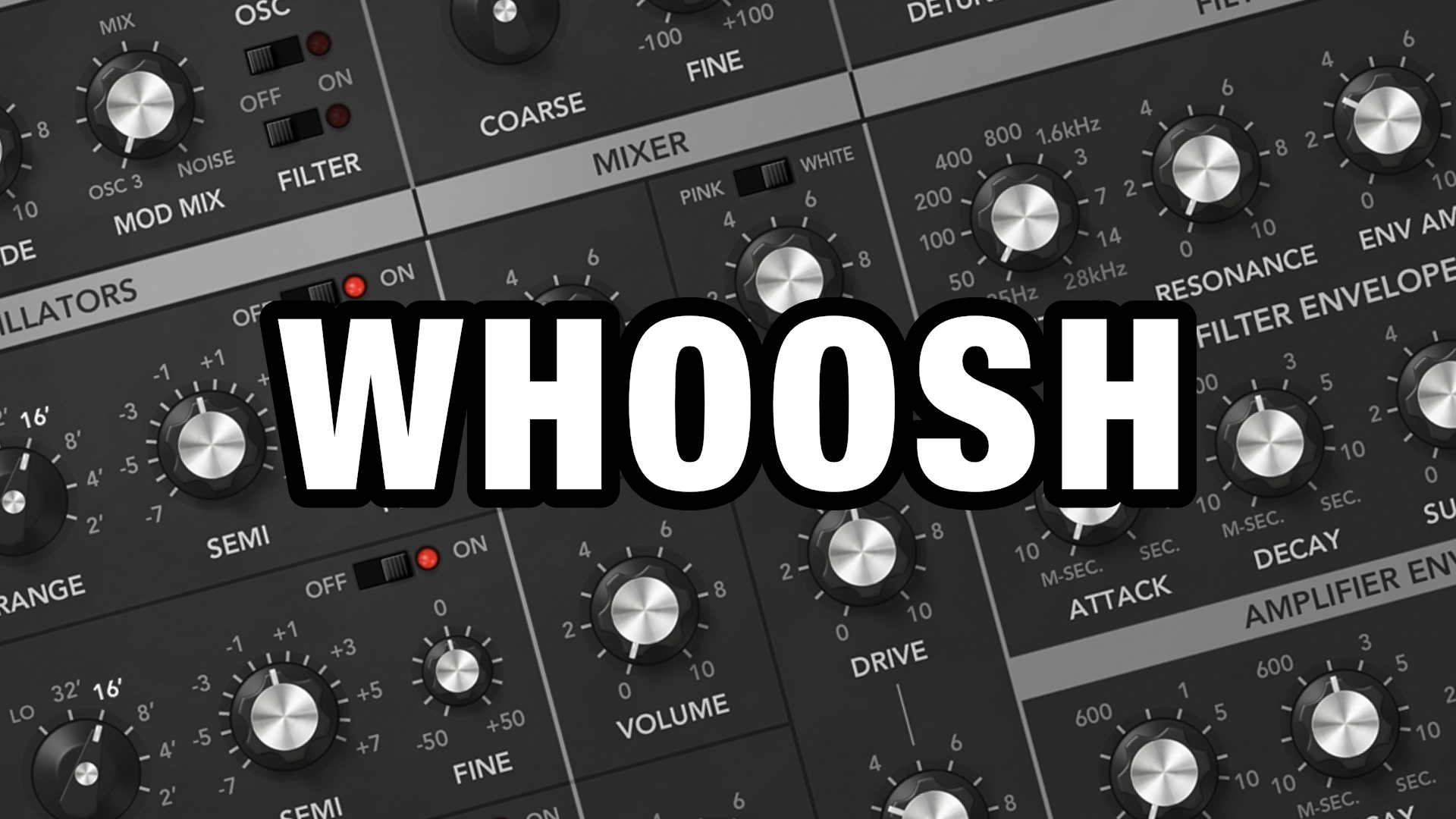 Do you want to learn how to create your own whoosh sound effects?
Do you want to learn how to create your own whoosh sound effects?
Whoosh and swoosh sounds are amazing to use as transition effects, both in music productions, and visual media productions. They add that quick burst of energy, and since they are not tonal sounds, they can be used anywhere.
What is a Whoosh Sound Effect?
A whoosh sound effect is basically mimicking the sound of an object passing, which creates a “whooshing” sound as it displaces the air in the transition.
An object that passes by you fast will also create a change in frequencies and panning, which is called the “doppler effect”.
So in short: a whoosh sound effect is based on a noise texture that changes the frequency range and stereo field over a duration of time, which we can call the “transition time”.
Whoosh Sound vs Swoosh Sound
What is the difference between a whoosh and a swoosh sound effect? Mainly that a whoosh generally have more weight and body in the sound, like a big object passing by (for example a train).
A swoosh is lighter and higher in frequency range, but also faster in duration. For example if you swing an object fast, which creates a swooshing sound by displacing the air as you swing.
How to create a Whoosh Sound Effect
- Start with a Noise Oscillator or Noise Texture Waveform
- Create the Transition Time with the Amp Envelope
- Shape the Whoosh with Filter Automation
- Use Stereo Automation to add Direction in the Transition
You can also add rhythm and movement to your whoosh sound effects using LFO’s, movement effects like tremolos, and even rhythmic gate effects. Anything from a a pulsing wave to a dramatic stutter.
Sound Creators for Whoosh Sounds
- Your Voice (Vocal Whoosh)
- Objects (Swinging in front of Microphone)
- Noise Oscillator (Synthesizer)
- Noise Waveforms (Samples)
- Recorded Noise (Audio)
Sound Effects for Whoosh Sounds
- Envelopes (Time and Duration)
- Filter Automation (Frequency Change)
- LFO’s (Movement)
- Compression (Dynamics)
- EQs (Tone Shaping)
- Motion FX (Rhythm)
- Reverb (Space)
